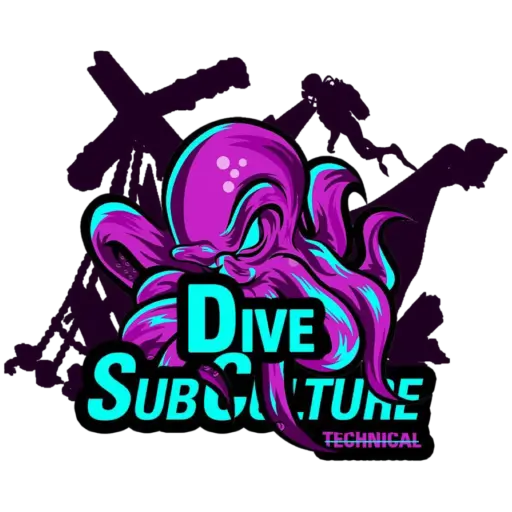TDI Intro To Tech Course


The TDI Intro to Tec course at Dive Subculture Technical is designed for divers looking to transition into technical diving. It covers the foundational skills needed to dive with more complex equipment, manage decompression, and extend dive limits. You’ll learn to handle multiple cylinders, improve buoyancy and trim, and master advanced dive planning. The course prepares you for deeper, more challenging environments, focusing on safety, precision, and efficiency. Ideal for divers with basic recreational experience who want to pursue technical diving in caves, wrecks, and beyond.
The course involves theory, confined water training, and open water dives to solidify the skills needed for further technical training. Participants will gain valuable knowledge about technical dive gear configuration, gas management, and handling emergencies.
It’s a comprehensive introduction to the world of technical diving, equipping you with the necessary skills to progress to more advanced courses like Decompression Procedures or Advanced Nitrox.

TDI Intro to Tec FAQs
– Recreational divers seeking to expand their skills into technical diving.
– Divers interested in learning proper buoyancy, trim, and gas management for deeper dives.
– Those looking to explore the world of overhead environments or decompression diving.
– Minimum age: 18
– Certification: Open Water Diver with at least 25 logged dives.
– Must be able to answer “no” to medical questions or obtain clearance from a physician.
– Proper use of technical diving equipment, including multiple cylinders.
– Advanced buoyancy control, trim, and propulsion techniques.
– Gas management strategies and dive planning for extended or decompression dives.
– Problem-solving and emergency management techniques.
– A solid foundation in technical diving skills, providing confidence for more advanced training like Decompression Procedures or Advanced Nitrox.
– Hands-on experience with technical diving gear configurations.
– Preparation for deep, cave, or wreck diving challenges.
– Comprehensive training that sharpens your dive planning and in-water performance.
– Completion of all academic and in-water sessions.
– Demonstration of proficiency in technical dive planning and execution.
– Participation in confined water and open water dives as prescribed.
– Meeting minimum standards for buoyancy, trim, and gas management throughout the course.
Course Duration - 3 Days
Academics 1 Day
Pool Session 1 Day
Open Water 2 Days
Course Structure
1. Physics
- Review concepts of pressure.
2. Physiology
- Understand ascent and descent rates.
- Learn about hyperthermia and hypothermia.
- Explore psychological factors in diving.
3. Equipment Considerations
- Evaluate single/double cylinder and valve options.
- Compare regulator and harness/BCD choices.
- Review dive computers, bottom timers, and depth gauges.
- Assess reels, spools, lift bags, and surface marker bags.
- Consider exposure protection gear.
- Focus on minimal necessary equipment and effective stowage.
4. Dive Planning
- Master dive tables and computer planning.
- Calculate surface air consumption (SAC) rates.
- Determine minimum gas reserves for no-decompression dives.
- Consider environmental factors in planning.
5. Procedures
- Develop strategies for entry and exit.
- Prepare for emergencies related to gas failure.
- Plan ascent and descent procedures.
Land Drills:
- Equipment Preparation: Select and prepare necessary diving gear.
- Team Skills: Conduct buddy checks for lift bag deployment.
- Gas Matching: Ensure proper gas matching among buddy teams.
- Hand Signals: Demonstrate familiarity with basic hand signals for communication.
- Pre-Dive Planning: Show effective pre-dive planning, considering team dynamics and personal gas consumption limits.
Pre-Dive Drills:
- S.T.A.R.T. Procedure: Implement the S.T.A.R.T. checklist before every dive, which includes:
- S: S-drill (Out of Air drill and Bubble Check)
- T: Team checks (buddy equipment checks)
- A: Air matching (gas matching)
- R: Route planning (entry/exit and underwater path)
- T: Tables (depth, duration, waypoints, and schedule)
- Stress Management:
Perform stress analysis and mitigation strategies.
This summary captures the essential skills and procedures students must master for effective diving preparation and teamwork.
In-Water Drills:
- Weight Check: Perform a weight check to ensure proper buoyancy.
- Buoyancy Control: Demonstrate the ability to hover at a fixed position in the water without using hands or feet.
- Trim Maintenance: Maintain a horizontal position during descent, bottom, and ascent phases of the dive.
- No-Silting Propulsion Techniques: Execute propulsion techniques without stirring up sediment, including:
- Frog kick
- Modified frog kick
- Modified flutter kick
- Backwards kick
- Skill Exercises with Trim and Buoyancy:
- Regulator exchange
- Regulator recovery
- Mask partial flood and clear with minimal air loss
- Mask removal and clear with minimal air loss
- Safety Drill: Perform a safety drill (S-drill) while maintaining trim and buoyancy.
- Valve Drill: Conduct a valve drill while maintaining trim and buoyancy (for divers using double cylinders).
- Surface Marker Deployment: Deploy a surface marker buoy or lift bag while maintaining trim and buoyancy.
9. Situational Awareness: Demonstrate good situational awareness throughout the drills.

Equipments Required (All Technical Courses)
- Primary and Secondary Regulators (Depends on Configuration)
- Technical Back-mount BCD (Wing & Bladder) or a Technical Sidemount Harness
- Primary Mask + Back Up Mask
- Wet Notes and/or Slates
- One Lift Bag and/or SMB
- Dive Computer and Timing Device/or Backup Computer
- Decompression Regulator(s)
- Reels and Spools
- Compass
- Torch and Back Up Torches
- Exposure Protection 3mm/5mm or Dry Suit

Downloads
Please sign them and send them back to via email











